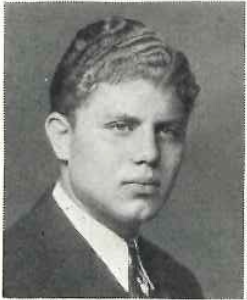Jack Gilburne ’42 Reflects on Stuyvesant and His WWII Service at 100
Stuyvesant High School, renowned for its rigorous academics and prestigious alumni, has a legacy that spans 120 years, and boasts a rich history of producing distinguished graduates who have made significant contributions to various fields. Among these notable alumni is Jack Gilburne ‘42, a centenarian and US Air Force WWII veteran who recently shared insights into his life and experiences during an interview with the SHSAA.

Jack, who went by the surname Goldberg while at Stuyvesant in the late 1930s / early 1940s, reminisced about his journey from Stuyvesant to the wider world and how he was shaped by the values instilled upon him during his time at E 15th Street. “I went to the old one with the wooden steps, and you knew it was an old school because as you took the steps up and down you’d see the worn out spots, and you could imagine where the students before me with their two feet took their next step,” he says, “being a graduate of Stuyvesant High School, in my era, the old school, it was God’s gift.” Reflecting on his time at Stuyvesant, he emphasized the profound influence of dedicated teachers and patriotic spirit among students, forged amidst the backdrop of World War II. “We used to have night classes, which were classes for guys that were pushing a little harder. And they were usually college level, like quantitative chemistry, and the teachers would have to come at six o’clock at night and have class, so we could ‘find that unknown.’” Also present for the interview were current Stuyvesant students, Hifza Kaleem ’26 and Mark Ionis ’25. The camaraderie and shared pride in their alma mater were palpable as they exchanged memories and insights into the evolution of Stuyvesant over the decades.
Reflecting on his formative years at Stuyvesant, Jack reminisced about the sense of fellowship and intellectual stimulation that characterized the school community. Despite the challenges of wartime, Stuyvesant remained a beacon of excellence, instilling in its students a profound sense of duty and purpose. “Even though we were both trying to, you know, outdo one another – if he got a nine, I want a 10, if he got a 10, I want 11 – nobody felt like they were on the outside; everybody was on the inside.” The interview also shed light on the challenges faced by students, both past and present. From the rigors of academic life to the socio-economic hurdles many students confront, Jack noted that Stuyvesant has been a place of both opportunity and adversity. Yet, it is precisely these challenges that have shaped the character of Stuyvesant alumni, instilling in them a sense of resilience and determination.


Throughout the interview, Jack imparted wisdom garnered from a lifetime of experiences, emphasizing the importance of education, resilience, and social responsibility. He underscored the significance of adaptability and perseverance, recounting his transition from aspiring chemical engineer to serving in the Air Force during wartime, where he ended up being one of an elite group of six that learned how to manipulate and use the Norden bombsight, which was a key factor in defeating Germany, in that it diminished the ability of Germany to manufacture arms. For reference, the Norden bombsight was a highly classified system that helped the United States Army Air Forces (USAAF) and United States Navy accurately drop bombs during World War II. It was a combination of optics, a mechanical computer, and an autopilot that allowed the bombsight to identify targets and fly the plane to them. Jack recalled, “they [Nazi troops] used to take a city, sending 1,000 planes over the city, and they called it carpet bombing, but we had the Norden bombsight that could hit within one mile of a target. And that ability to do what I did in the Air Force – I give Stuyvesant credit for the abilities that I picked up.”

The conversation also touched upon societal dynamics and the evolving landscape of education and opportunity. After the war, Jack enrolled at Georgia Tech and later moved to the southwest where he worked as a ceramic engineer making silica tiles for the space shuttle. He presently lives in Phoenix, AZ with his family. Jack’s observations on the changing demographics and cultural shifts within Stuyvesant and society at large provided valuable perspectives on progress and continuity. As the interview drew to a close, Jack expressed gratitude for the transformative role Stuyvesant played in shaping his life and career. “… your Stuyvesant experience, I can truly say it’s invaluable for your future, if you’re able to take advantage of it. And keeping track of your classmates as you grow up is also important.” He conveyed a deep sense of pride in our alma mater’s legacy and a hopeful outlook for the future generations of Stuyvesant students.
